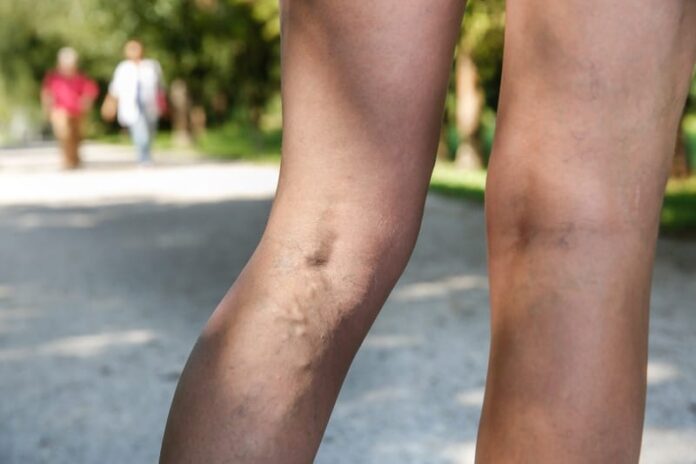Varicose veins are a prevalent condition characterized by enlarged, twisted veins, primarily affecting the legs. They can cause pain and aesthetic concerns for people who have them. While varicose veins may not always be preventable, various strategies can help manage the pain. This article will provide valuable tips to alleviate the symptoms and improve well-being.
Causes of Varicose Veins
Varicose veins are a prevalent vascular condition that affects millions of people worldwide. They occur when the valves within the veins become damaged, leading to blood pooling and vein enlargement. It is unclear what causes varicose veins in particular, but certain factors increase the risk of developing this condition, like:
– Genetic factors
– Age and gender
– Pregnancy
– Obesity
– Sedentary lifestyle
Symptoms of Varicose Veins
Varicose veins can cause a range of symptoms that vary in severity from person to person. Common symptoms include:
– Visible, twisted veins
– Pain and discomfort
– Swelling and heaviness in the legs
– Skin changes and ulcers
When to Seek Medical Help
It is advisable to consult a vein doctor, like Port Charlotte vein specialist, if you experience any of the following situations:
– Worsening symptoms. If your varicose veins become increasingly painful, swollen, or begin to bleed.
– Development of complications. If you observe skin changes, such as ulcers, dermatitis, or infection.
– Impact on daily life and activities. If varicose veins significantly affect your quality of life, work, or physical activities.
Lifestyle Changes for Managing Varicose Veins
In addition to medical interventions, specific lifestyle changes can significantly improve the management of varicose veins. Consider incorporating the following practices into your daily routine:
1. Regular exercise and physical activity
Engage in low-impact exercises to promote blood circulation and strengthen leg muscles. You can try walking, swimming, or cycling.
2. Maintaining a healthy weight
Shedding excess pounds can alleviate pressure on the veins and reduce symptoms.
3. Avoiding prolonged sitting or standing
Take breaks and change positions frequently to prevent blood from pooling in the veins.
4. Elevating the legs
Prop up your legs on a pillow or cushion while resting to facilitate blood flow back to the heart.
Dietary Recommendations
A healthy diet can significantly help in managing varicose veins. Consider the following dietary recommendations:
1. Foods that promote healthy circulation
Incorporate foods rich in antioxidants like vegetables, fruits, and whole grains into your diet.
2. Importance of hydration
Drink adequate water throughout the day to maintain optimal blood viscosity.
3. Avoiding excessive salt intake
High sodium consumption can lead to fluid retention, exacerbating swelling and discomfort associated with varicose veins.
Self-Care Techniques
Self-care techniques, in combination with lifestyle changes and dietary adjustments, can relieve discomfort caused by varicose veins. Try the following methods:
1. Taking breaks and stretching
Avoid long periods of sitting or standing by taking short breaks to stretch and move your legs.
2. Leg elevation exercises
Lie on your back and raise your legs to a 45-degree angle for 15 minutes. Try this exercise several times a day to promote blood flow.
3. Massaging the legs
Gently massage the affected areas, using upward strokes towards the heart. These movements stimulate circulation and avoid swelling.
4. Cold and warm compresses
Apply cold compresses to reduce swelling and warm compresses to alleviate pain and relax the muscles.
Home Remedies and Alternative Therapies
Several home remedies and alternative therapies may provide additional relief for varicose veins. Consider the following options:
1. Herbal remedies and supplements
Certain herbs, such as grape seed extract, can potentially improve vein health. Consult with a vein doctor before trying any herbal remedies or supplements.
2. Essential oils
Massaging the legs with essential oils, such as lavender or chamomile, can help reduce pain and inflammation.
3. Acupuncture and acupressure
These ancient techniques stimulate specific points in the body. They promote better blood circulation and pain relief.
Conclusion
Managing pain and discomfort from varicose veins involves a multi-faceted approach that includes lifestyle changes and medical interventions. Adopting the tips outlined in this article can effectively alleviate symptoms and improve your overall well-being.
Read Also
- The Future of Men’s Health: Why Telehealth Is Here to StayTelehealth isn’t just a pandemic trend that faded into the background. For Australian men, it has become one of the most practical, time-saving, and stress-free ways to manage everyday health — and it’s shaping the future of how we access care. Platforms like DOCTO, an Australian online doctor and specialist telehealth service, are leading the… Read more: The Future of Men’s Health: Why Telehealth Is Here to Stay
- How to Build a Simple, Clean Skincare Routine ?You don’t need a complicated skincare routine. It doesn’t have to be something that requires twenty different products and confusing steps. Your routine works well with just a few high-quality clean ingredients. The beauty industry keeps pushing more products, but your skin actually needs less. You only need a simple approach to get better results… Read more: How to Build a Simple, Clean Skincare Routine ?
- How Preventive Dental Care Supports Overall HealthHave you ever wondered how a simple dental checkup could impact your entire body? Oral health is more than just a bright smile. Studies show that poor dental habits can contribute to serious health problems. Gum disease and tooth decay are linked to heart disease, diabetes, and infections. Yet, many people overlook preventive dental care.… Read more: How Preventive Dental Care Supports Overall Health
- Seeing Clearly in a High-Tech World: A Deep Dive into Advanced Vision Care ServicesProtecting your eyesight isn’t optional—it’s essential. Modern eye care has evolved far beyond basic exams, offering advanced diagnostics, personalized treatments, and surgical innovations that keep vision sharp for life. A leading example is Intermountain Eye Center, home to specialists like Dr Fishburn Boise, where patients receive comprehensive, high-level vision care designed to preserve long-term eye… Read more: Seeing Clearly in a High-Tech World: A Deep Dive into Advanced Vision Care Services
- Why the Keto Diet Works for Some People—and Fails Dramatically for Others: An Ayurvedic Breakdown for Modern HealthcareThe keto diet has dominated weight-loss culture for years. For some people, it produces rapid fat loss, stable energy, and improved mental clarity. For others—especially those who gain weight easily—it leads to burnout, digestive distress, rebound weight gain, high cholesterol, and a metabolism that feels slower than before. Healthcare often frames this as a discipline… Read more: Why the Keto Diet Works for Some People—and Fails Dramatically for Others: An Ayurvedic Breakdown for Modern Healthcare
- How to Choose the Best Assisted Living Facility for SeniorsAre you looking for the right assisted living facility for a senior loved one? Choosing a place can feel overwhelming. There are many factors to consider, from care services to the environment. Safety, comfort, and social opportunities play important roles in daily life. Each senior has unique needs and preferences that must be met. Understanding… Read more: How to Choose the Best Assisted Living Facility for Seniors







